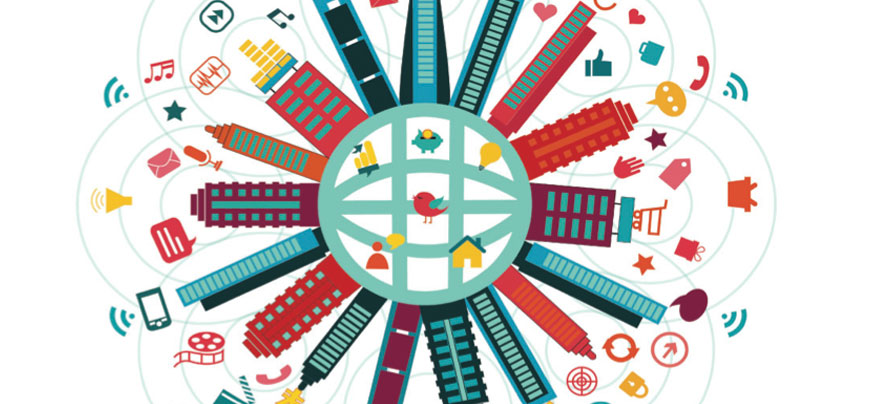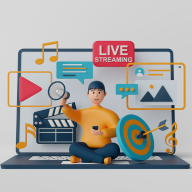IoT: The Next Big Thing

Retail
501 week ago — 6 min read
Over the past few months, the term “Internet of Things” (IoT) has been floating around in conversations and articles. Beyond a casual interest, this paradigm has not been completely explored by Indian Retailers. One reason for this could be that retailers have been overwhelmed by the sheer pace of technology in the past 18 to 24 months. They had just about finished stabilising their Point of Sales and core ERP systems when they realised the need to invest in Space Planning, Smart Replenishment and Customer Loyalty Management Systems. Of course, the Analytics implementation is a never-ending project because the Buying and Operations teams have discovered yet another dimension without which they absolutely cannot do their analysis.
Enter online retailers whose dictionaries are missing words like profit and loss but are flush with funds all the same and are creaming the market. Now brick and-mortar retailers faced with softening growth have to revisit all their systems and processes and play catch up. Several retail CEOs expounding on Omni Channel Retail are playing the experience card with which they propose to differentiate their stores. In the midst of all this action they can be excused for not showing too much interest in something as futuristic as IoT.
Old wine, new usage
In reality, IoT is the application of technology that has already been around for a while. Now this technology is being miniaturised and dumbed down. It is being put into devices and appliances that hitherto did not have them. These different objects can now ‘talk’ to each other and the results are pretty interesting. Some early examples of IoT at work involve the ubiquitous mobile phone and an app. We get air conditioners that can be set to the temperature of our choice even before we reach home. The set top box can be made to record one’s favourite program remotely. More recently, some lighting companies have introduced bulbs that can recognise that when we are coming home and switch on automatically. The next wave of devices would possibly be in cars (talking to GPS Satellites to set your routes) or TVs (that recognise the viewer and change to their favourite programs).
Relevance to retail
There are also some interesting IoT applications for retailers within the store and enterprise:
- Imagine a scenario in which a customer is trying on tops in a department store. The retailer has incentivised its customers to download and scan the bar code before trying them on. In doing so, a notification goes to the department manager, who keeps a size smaller and one larger on standby so that the customer does not have to go out of the trial room, should the one she is trying on not fit. The customer loves the experience and the sale is closed. But say that the size is not available at the store but is in a nearby location or at the DC. The app gives the customer the choice of paying for the garment using the mobile wallet and the product is shipped to her home.
- Beacons have been around for about two years now. Placing beacons mapped to departments and product categories enable retailers to understand customer buying patterns — which aisles are more traversed, what products interest customers more and other such findings. Feeding this data into the retailers’ analytics systems can throw up several actionable customer shopping patterns. Store layouts could be optimised based on data thrown up by beacons.
- Smart vending machines can send notifications to the supply chain teams when they need replenishment giving the brand real time inventory and sales insights. It can also notify the service teams in case of any malfunction thus decreasing downtime, positively impacting sales.
- Smart Signage solutions working in tandem with the retailer’s location-aware mobile app can display messages that can incentivise buying behaviour e.g. displaying offers/promotions/new arrivals on the Wine Selection when a connoisseur walks into the cellar.
- One of Europe’s largest CDIT retailers uses IoT technology to notify its customers and its call centre on the position of its delivery trucks so that customers are notified on the ETA of their orders in real time. Also the technology is used to warn the SCM team should the driver digress from the route plan
The future
Obviously, only imagination limits the extent of IoT applications. Other industries have been using IoT for years. The aviation industry and nuclear plants have been applying IoT on a regular basis say to detect engine malfunctions or higher than normal radiation levels. In this year’s NRF — retail’s biggest event, IoT was an underlying theme in several discussions.
Chances are that in the months to come many more deployments will become evident. Amazon’s Dash Button — a simple button press to order anything right from your home is already in production in a limited way.
Amazon also has a Developer Program that allows third parties (perhaps even brands) to use it on their appliances. For example, a washing machine manufacturer can potentially facilitate its customers to order detergent on the press of a button placed on the machine. A printer manufacturer can do likewise for cartridges. The Wearables industry is expected to explode once Apple’s iWatch hits the stores. It will generate high quality customer data which will especially interest those in the healthcare and fitness business. While traditional retailers would love to believe that retailing is an art, it is evolving into a science. Practices that were differentiators a few years ago are now hygiene. Retailers need to be constantly questioning the status quo and be ready to rip apart their existing systems and processes and adopt new ones should that become necessary. In this scheme of things, adoption of IoT will likely drive the next wave of innovation in retail.
Image and Article Source: STOrai Magazine
View STOrai 's profile
Other articles written by STOrai Magazine
The Art & Science of People Pleasing in Retail
10 week ago
Enhanced Brand Storytelling in the Digital Age
42 week ago
Most read this week
Trending













Comments
Share this content
Please login or Register to join the discussion